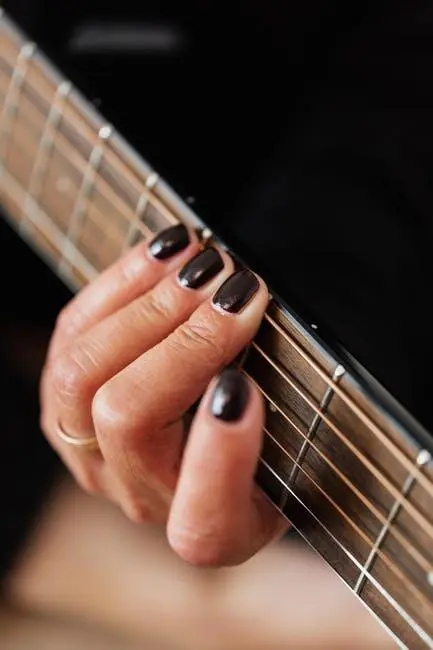Explore the most popular Irish music instruments, from fiddles to flutes, bodhráns, and more, shaping traditional and folk melodies.
Few cultures in the world have a musical tradition as rich and spirited as Ireland’s. The island’s melodies are known for their soul, storytelling, and rhythm. These sounds that have inspired generations across the globe.
Whether it’s a lively pub session or a hauntingly beautiful ballad, the unique blend of Irish music instruments brings life and authenticity to every note.
In this guide, we’ll take a closer look at some of the most popular instruments in traditional Irish music. The ones that give Celtic tunes their unmistakable charm and enduring power.
1. The Fiddle
No instrument defines Irish music quite like the fiddle. Similar in appearance to a violin, the fiddle takes on a life of its own in Irish hands.
Fiddlers play with a distinctive technique. It emphasizes quick bowing patterns, slides, and ornamentation that give tunes their lively bounce. The fiddle’s versatility allows it to lead a session or blend beautifully with other instruments.
Each region of Ireland even has its own fiddling style. For example:
- Donegal
- Clare
- Sligo
Whether it’s a spirited jig or a melancholic air, the fiddle captures the full range of Irish emotion – joy, sorrow, and everything in between.
2. The Tin Whistle
The tin whistle (also known as the penny whistle) may look simple, but it’s one of the most iconic Irish music instruments. This small, six-holed flute produces a bright, sweet sound that cuts beautifully through a crowded pub or festival.
Because of its affordability and portability, the tin whistle is often the first instrument many Irish musicians learn. Despite its simplicity, skilled players use techniques like tonguing, rolls, and vibrato to add incredible expression.
Famous tunes like “Danny Boy” and “The Foggy Dew” come alive when played on this humble yet emotional instrument.
3. The Bodhrán
Every great session needs rhythm, and that’s where the bodhrán comes in. This traditional Irish frame drum is made of goatskin stretched over a wooden frame and played with a stick called a tipper (or sometimes just by hand).
The bodhrán is often described as the “heartbeat” of Irish music. Players use subtle wrist movements and varied strokes to create rhythms that drive jigs and reels forward.
What’s fascinating is that no two bodhrán players sound exactly alike. It’s an instrument of personality and instinct. A skilled musician can shift from deep, resonant beats to light, fluttering accents in an instant.
4. The Uilleann Pipes
If the fiddle is the voice of Irish music, the uilleann pipes are its soul. Similar to the Scottish bagpipes but softer and more complex, these pipes produce a rich, layered sound full of emotion.
Unlike traditional bagpipes, uilleann pipes are played with a bellows under the arm rather than by blowing air through the mouth. This allows for more control over volume and tone. This is perfect for both quiet ballads and lively dances.
They’re notoriously difficult to master, but their sound is unmistakably Irish. A blend of melancholy and majesty that evokes the country’s landscape and history.
5. The Irish Flute
The wooden flute is another beloved staple in Irish traditional music. With its mellow, breathy tone, it can sound both haunting and joyful. This depends on the tune.
Unlike metal orchestral flutes, the Irish flute is usually made from African blackwood or similar hardwoods. It produces a warm and organic resonance. Players often use ornamentation techniques like rolls, cuts, and slides to mirror the style of fiddlers and pipers.
It’s an instrument that perfectly captures the flow and lilt of Irish melodies.
6. The Concertina and Accordion
While not originally Irish, these buttoned instruments quickly became central to the country’s folk sound. The concertina is smaller and plays crisp, percussive notes ideal for quick dance tunes. The accordion, on the other hand, adds fullness and power to group performances.
Both are popular at céilís (traditional Irish social dances). This is where their energetic rhythm and bright tones keep the crowd moving.
Accordionists often develop personal flair. It adds dynamic swells and ornamentation that make each tune feel fresh.
7. The Harp
No discussion of Irish music instruments would be complete without the harp. It’s Ireland’s national symbol. The harp has deep roots in Irish history, dating back over a thousand years.
It once served as the instrument of poets and kings. Though it nearly disappeared after centuries of cultural suppression, it has proudly reclaimed its place in modern Irish music.
Today’s harpers play everything from traditional airs to new compositions. It blends ancient elegance with contemporary artistry. The harp’s gentle yet powerful sound continues to inspire musicians and listeners alike.
8. The Banjo and Mandolin
Both the banjo and mandolin made their way into Irish folk music through transatlantic influence in the early 20th century. They brought new textures and energy to traditional tunes.
The tenor banjo, typically tuned to match fiddle pitch, delivers a crisp, percussive rhythm that complements faster melodies. The mandolin, with its bright tone and double strings, adds a sweet melodic layer that blends beautifully in group settings.
These instruments helped shape the sound of contemporary Irish folk bands. It keeps the tradition evolving and vibrant.
9. The Guitar and Bouzouki
In more modern Irish music sessions, stringed accompaniment has become a staple. Guitars and bouzoukis add harmonic depth, rhythm, and structure beneath the melody instruments.
The Irish bouzouki, adapted from the Greek version, produces a rich, resonant sound with ringing sustain. It pairs perfectly with fiddles and flutes. This provides a steady foundation for lively dance tunes or soulful ballads.
The Timeless Appeal of Irish Instruments
What makes Irish music so captivating isn’t just the instruments themselves. It’s the emotion and storytelling behind them. Each note tells a piece of Ireland’s history, from the joy of village celebrations to the melancholy of emigration and loss.
If you’re inspired to explore more about traditional Irish sounds or even try playing an instrument yourself, you can learn more about Irish instruments, their history, and where to find them from experts who keep the craft alive.
Embrace the Sound of Ireland
Irish music continues to thrive because it’s rooted in community, emotion, and authenticity. The instruments that shape it – fiddles, flutes, pipes, drums, and harps – connect past and present through the universal language of melody.
So next time you hear a lively reel or a slow, wistful air, take a moment to appreciate the craft and heart behind it. These Irish music instruments don’t just play notes. They tell stories, celebrate culture, and carry the spirit of Ireland in every tune.
For more entertainment tips, check out our blog posts.
Also Read-How Urban Living Shapes Modern Lifestyles










